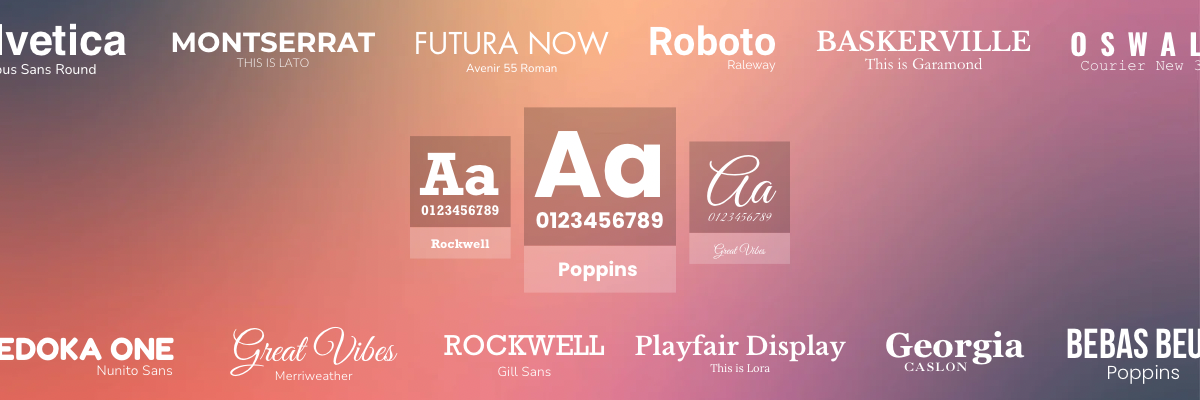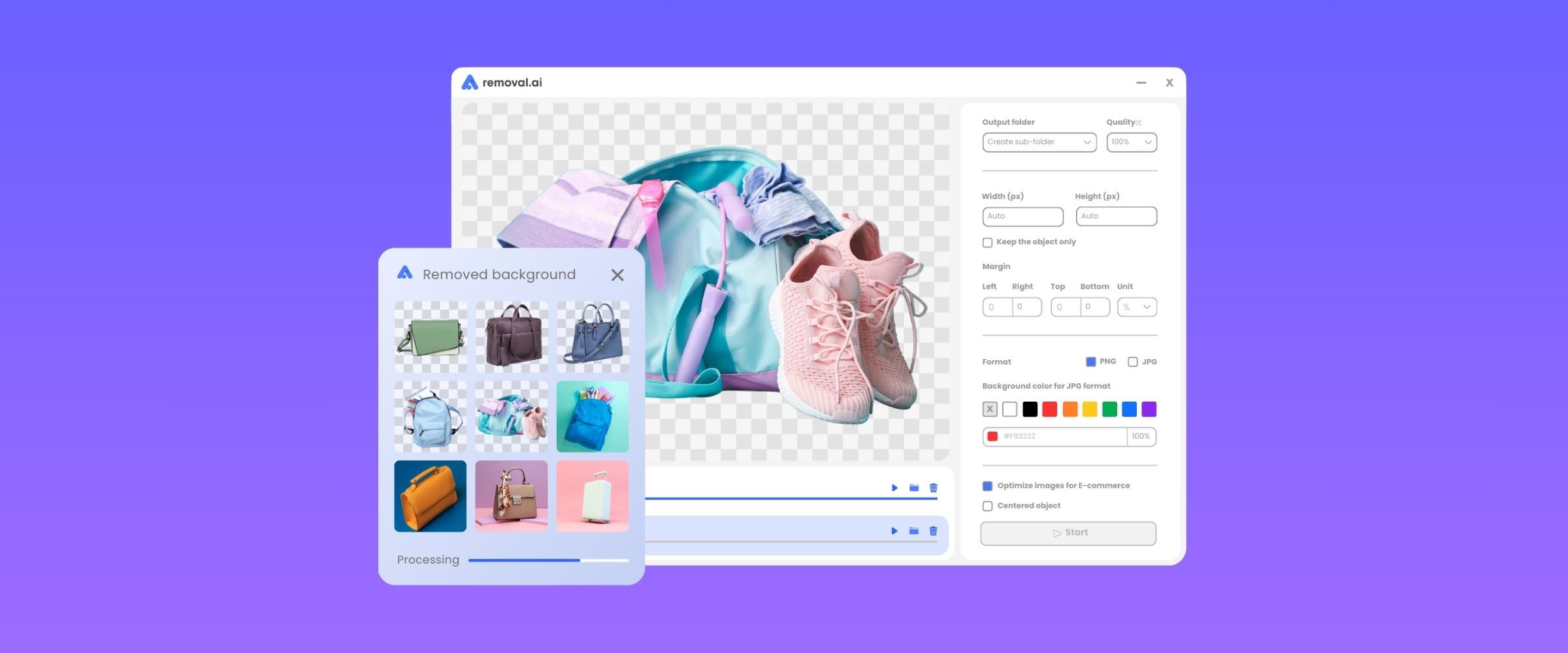
10 Powerful Branding Examples
Setting your brand apart from your competition is always important. From the packaging, features, benefits, campaigns, and advertisements, all these matter when it comes to establishing your reputation, audience’s perception, and trust. Hence, solid, relatable, consistent branding is a must.
The American Marketing Association states that sellers use a brand or any unique feature that differentiates its products or offerings from other sellers — it can be through a brand name, elements, logo, advantages, or other characteristics. If you are consistent with your branding and make it stand out among the pools of other companies, you can thrive and survive the heated competition. The goal here, however, is not just to establish your credibility but to make your brand powerful and uphold the support of your customers and partners through the test of time.

What are the Types of Branding?
There is no one way towards great branding. Even if you ask different successful companies about how they are doing their branding jobs, you will receive varying answers. Hence, you must know what type of branding is effective for you, or you can create your path to attain unique and efficient branding and eventually become part of the examples of powerful branding soon.
But for now, here are the most common types of branding.
1. Individual Branding
This type of branding means that you package or brand an item from your products, making it the highlighted offer of your company. This is a great branding example that many large corporations use, especially those with a wide range of items. For instance, clothing brands like H&M develop different products based on gender, and the Apple firm packages their items such as iPhone, iPad, and Mac. You can do this type of branding if you already produce many products and want to emphasize or market a particular thing you believe many people will appreciate or purchase. This initiative will bring your company more recognition once that specific product gains traction in the industry.
2. Company Name Branding
By the name itself, this type of branding is popular among companies that have already built their image to the populace. These firms produce products carried by the company name rather than the quality or uniqueness they have. Customers often associate the packaging, logo, font, trademark style, upgraded features, color palette, and other elements with the entire company. Some examples of companies that depend on company name branding are Starbucks, Apple, Coca-Cola, and Adidas.
3. Online Branding
Given the current state of the world, where everything almost happens digitally, brands need to go online. Thus, the emergence of online branding or internet branding. This kind of branding concentrates on how businesses present their company and products online through different initiatives on various platforms. Any digital activity like establishing a website, generating social media pages, publishing and promoting branded video content, and engagements through ads, blogs, and PR stunts belong under this category.
4. Brand Extension Branding
Brand extension or brand sketching branding is often familiar with already successful brands that opt to expand their victory in different platforms, various brand products, categorizing items, or augmenting their reach online and offline. Many companies in the fashion industry, like footwear, clothing, accessories, and fragrances, employ this type of branding because these items might evolve into different products or offers, but the branding and company identity remains.
5. Attitude Branding
In this era, companies should know how to maximize and leverage abstract ideas into powerful assets in building their brands. Nowadays, many businesses are starting to relieve this type of branding where they stress a confident attitude or message, typically in their taglines, to promote their products and project what kind of brand they have. Most advertisers believe that this attitude branding will help firms to create a dynamic and unique relationship among their consumers and partners, leading to a “larger than the product” feel because it directly goes to the feelings and lives of the people. Nike is the most famous brand to capitalize on this by generating their well-known phrase, “just do it,” to market their footwear.

What Makes a Branding Powerful?
The answer is simple: find your unique selling proposition.
Defining your unique selling proposition will set you apart from your competitors. Once you successfully establish your unique advantage for your audiences, your campaigns, and other initiatives will smoothly follow, leading to more profit and prospective consumers.
Aside from defining your USP, you must also accomplish the following to establish your brand:
- Consistency: Consistency in colors, typographies, elements, messaging, and other elements is critical to powerful branding. Many advertisers recently conquered the stage of digital ads and campaigns, highlighting the visual appeal they can do for their audiences.
- Strong Call to Action – your brand messaging will remain static without a call to action that will push your target market to do something about it. Consequently, it would help if you came up with a solid and doable CTA to elevate your branding further.
- Good Public Relations – it is also crucial to have a good relationship with media and other publicities because consumers nowadays equate good image with good branding. Thus, you need to maintain having an ideal brand that advocates greater welfare for the people, benefits the public, and addresses the needs they want to satisfy in the first place.
10 Powerful Branding Examples
Here are the companies with products that demonstrate powerful and impressive advertising initiatives through the years, making them great branding examples you need to know.
1. Tesla
Tesla is a great example of a powerful brand. It transcended the electric vehicle industry by highlighting its commitment to sustainability and innovative use of technology. Tesla’s branding does not rely on the number of cars they sell alone, but on the profound impact and message it conveys: to commit to innovation, ethical business, and environmental care.

Through the years, consumers and even people without so much interest in cars have already positioned Tesla as one of the best in the vehicle industry and become the epitome of a high-performing brand with a proactive system and approach. Despite not selling millions of cars, Tesla garnered millions of followers because its branding follows a powerful and impactful message. Tesla is a stand-in for ethical business practices, concern for the environment, and the pursuit of excellence. With its continuous pledge to innovation, Tesla aims to level up their edge by creating distinctive features such as easter eggs and gaming systems that satisfy its consumers. Therefore, Tesla’s branding comes with an ethical promise, revolutionary aspirations, and constant innovation in the automobile industry.
Tesla’s direct-to-consumer sales model and charismatic leadership under Elon Musk also contribute significantly to its brand, distinguishing it as a forward-thinking and aspirational company. This holistic approach to branding showcases Tesla not just as a car manufacturer, but as a visionary company shaping the future of transportation and energy
2. Apple
One great branding example is what Apple has been doing for years. Getting the inspiration and serving as the first illustration of what Simon Sinek’s Golden Circle framework projects, Apple efficiently poses the questions: why–how–what in catering to the needs of their consumers.
As a brand, Apple became cutting-edge and sophisticated, manifested in their various products that exceedingly break through the noise in the smartphone and laptop line of business. They successfully instilled the idea that you are imaginative, creative, innovative, and unique if you use an Apple product.

Like what Tesla did, Apple has also branded its products without focusing mainly on pricing but instead out the focus on what the products can do for the buyers and the value they can give through high-end performances and elegance beyond the surface.
Despite the rapid increase of various mobile brands, Apple remains one of the examples of powerful branding because they maintain to be the standard of premium exclusivity and how aesthetic products can outdo many other brands.

3. Coca-Cola
Coca-Cola became the global symbol of American taste. From being marketed as a temperance drink and patent medicine, it evolved into a phenomenal soda because of powerful branding and advertising.
Due to Coca-Cola’s consistent branding, its products are recognizable in many ways, like colors, logos, fonts, and even its “AHH” sounds. The brand’s abstract idea of giving happiness through drinking a bottle of Coca-cola has spread across cultures and is now embraced by many people worldwide.
In 2021, during the pandemic, Coca-Cola boldly erased its logo from its canned products and replaced it with positive and inspirational resolutions as part of a marketing campaign. This initiative merely shows that with consistent and relatable branding, a company and its products can be distinguishable without any logo or trademark since they have successfully inculcated the brand identity into everyone’s mind.
With this, Coca-Cola has efficiently championed powerful and engaging messaging that can be passed on every year, making it an advantage and an excellent example of powerful branding.

4. Amazon
As a company in the e-commerce industry, it is crucial to establish the brand’s identity and credibility, and Amazon has done that for years.
Amazon continues to anchor its branding to good advocacies and customer journey convenience, which are all reflected in its aspiration of becoming the world’s most customer-centered business. By merging brand loyalty and innovation, Amazon has touched its consumers’ hearts and successfully established trust that made the business shine amid the congested e-commerce market.
With this, customer journey branding becomes the solitary aspect that Amazon specializes in best. Amazon’s cornerstone regarding its branding strategy is paying attention to and responding to customer needs. What Amazon has been doing is one of the great branding examples since it puts the audiences as the focal point in all of its marketing efforts and campaigns.
The superior customer service and constant dialogue towards positive change brought them to the pedestal of success in the industry. Alongside excellent SEO, brand compelling story, and product diversification, Amazon has come a long way.

5. Starbucks
Who would not know this famous and classic coffee brand around the world? Of course, everyone knows Starbucks as the biggest coffee chain shop across nations since the brand has successfully built its reputation and continuously modified its ways based on consumers’ desires and needs.
But aside from company branding, Starbucks has efficiently made a mark because of different strategies: First is geographic expansion. It is the accessibility for the people that makes Starbucks well-known since in almost every corner of the world, you can see a Starbucks, whether big or small, shops. The second is product variety branding. Since many already know them, promoting different menu items and products that go beyond the coffee classification is way easier. Starbucks now offers planners, mugs, other merchandise, and their famous coffee. Lastly, this brand also prioritizes catering to the needs of its patrons by providing outstanding services.
Hence, Starbucks mastered different branding strategies depending on several considerations. Nonetheless, no matter what type of branding they uphold, what is most important is that the brand started by uplifting its company name, then eventually led up to making quality, superb experience, and convenience synonymous with coffee.

6. Nike
The famous “Just do it!” speaks volumes about how Nike surpasses the test of time and continuously does excellent in the competitive market. This attitude branding is an example that can help many advertisers and marketers cut above the majority in the industry once executed well.
As a brand, Nike’s product line dwells on two main aspects: performance and innovation. Nike has packaged its offers based on many people’s views. From here, they mastered putting the abstract idea into tangible items manifested in their waffle shoes that many professional athletes in every generation use.
The above tagline helps the brand attract many consumers by appealing to their bravery, emancipation, and coolness. Besides that, Nike has also immersed itself as a brand with a greater purpose, like pushing for equality, valuing communities, and preserving the environment. This point is one of the great examples of powerful branding because the company propagates constructive societal changes that the populace will admire and follow.
7. Airbnb
For a decade, Airbnb is still a pertinent company that welcomes millions of tourists and hosts visitors from different parts of the world. Their motto, “travel like a person” to “belong everywhere,” is a manifestation of great powerful branding because they alter things based on several factors that best work for them.
As a company that caters to different cultures, their branding using two words that ultimately tell about what they do and what their consumers would feel was a great move.
As part of the internet rental marketplace, branding became crucial for Airbnb. The company believes its branding is a statement about who it is, what it stands for, and how it plans to set itself apart from its competitors. Hence, Airbnb created the framework for practically all areas of their company’s activities.
They expanded their reach, branding their identity as the go-to travel-related firm, widening their services, and keeping their core values tight. Therefore, the successful local availability branding and interpersonal relationship with consumers aided the brand in efficiently positioning Airbnb in the market.

8. Old Spice
Old Spice has been a well-known brand since 1937. With this, they need to go the extra mile to persistently stay in the market and foster their branding based on what is in and on-trend. Given the specificity of its target market, Old Spice needs to spice up its game and attract men to use its grooming products.
One thing that best describes Old Spice’s branding is the customer satisfaction they bring to their audiences through changing their conventional promotion and establishing the fun personality of the company reflected in their ads and other campaign efforts like “Old Spice Swagger.”
Therefore, Old Spice goes above and beyond by maximizing the audience’s enjoyment, turning their consumers into loyal ones. This company’s brand positioning has secured a spot in the industry, making the demographic more specific and marketing its products to those who matter.
As seen in their witty marketing campaigns, curtly amusing content marketing and high online interactions, the Old Spice brand adopted a new tone and strategy that is unapologetically bold and entertaining. The lesson here is that consistency is advisable and efficient but adapting to change is something that you should always welcome.

9. Google
Google is everything nowadays. If you want to search for something you do not know or verify what you know, Google is the key. As a search engine technology and a hub for many other online activities like AI, e-commerce, advertisements, and cloud computing, Google has successfully branded itself as the portal to almost everything you need.
Regarding branding, the company’s two founders are the essential drivers of Google’s success. Their vision to offer what the people need becomes the impetus for the platform to thrive and be embraced by the majority.
Google did not rely on advertisements. They used relatable public relations and viral marketing and transformed these two into their brand strategy. They did not believe in consistency, but they aspired to change. What Google did is an example of powerful branding because they veer away from the typical branding and fulfill their promise to their customers’ changing desires. This point can be seen in how they changed their minimalist or almost no-design website into a wall that reflects current events and global celebrations. With this, it is evident that traditional branding might have higher chances of making you more profitable, but the courage to take risks and seek transformation may also bring you the success you do not expect.

10. Disney
The Walt Disney Company, also known as Disney, is a global American media and entertainment company that is a good branding example. Its foundation is affixed with compelling storytelling. Disney has been known for evoking various emotions in its audience by telling narratives that touch and sway the lives of all ages.
This kind of branding approach became Disney’s core and is still evident in its advertisements, products, billboards, and other marketing efforts. It has become their real identity through the years.
Aside from building an identity rooted in feelings and attitudes, Disney also emphasizes researching and identifying their target market per product. From knowing them, Disney creates strategic brand movements to maintain these audiences and offer them something new and different experience.
That is why Disney’s powerful branding lies within its customer retention, brand loyalty, and upgrading stories into magical films and shows that many people love to watch and patronize.

10 Tips on How to Build Your Brand
The mentioned Big Brands have given great branding examples to replicate. They have a proven track record of successful branding campaigns and have been consistent in their innovative ideas. You’ll be tempted to duplicate exactly their branding examples, but this could be a hit or miss.
There are a lot of factors to consider in building your brand. Each factor has to be carefully curated to fully reflect your brand’s identity. And, there are a lot of considerations you have to resolve to come up with an effective brand campaign.
So, here are some tips that could help you to build an impressive brand.
1. Identify your target audience
For you to have a successful brand campaign, you have to know who you are selling to. Who are your ideal customers?
Tom Duncan, an advertising specialist, explains that a target audience is a group that has significant potential to respond positively to a brand message. In a simpler sense, these are the people who are going to buy your product.
You’d argue that it would be more lucrative to have your target audience be everyone. But, that would be inefficient and unproductive in application.
Analyzing your potential customers will enable you to build a targeted branding campaign that will generate more positive reactions than a broad campaign. Your efforts will be more focused on a group that shares the same age bracket, gender, and interest.
One of these branding examples would be Nike. Most people wear shoes every day, that is given. But since Nike specializes in running shoes or sports shoes, their branding targets active people or athletes. Most of their endorsers are famous athletes who are the best in their chosen game. And, even their slogan “Just do it”, embodies an active lifestyle.
You can determine your target audience by identifying who would benefit more from your product or service. You have to know your potential customer’s pain points, what their problems are, and how your product or services will resolve them.
Study the demographics of your potential customers. This refers to age, gender, location, educational level, etc. This will give you a precise target audience that could share the same interests.
If you already have your target audience, learn more about them. You can browse online sites that post reviews about your service or product category. Talk to people from your target audience and ask them about the products or services they use. Social Media is also a great way to track which pages your target audience is following.
You must know your target audience. This will help your branding be more focused and efficient.
2. Study your competitors.
You must study your competitors. This will not only give you relevant data about the current market but will help you form a better strategy for your brand.
Success and failures are always going to be part of the business. By studying your competitors, you can draw inspiration from their success. You have to examine the factors that made them successful. What were the steps that they have taken to reach this achievement? And could you apply the same to your brand?
You can also learn a lot from their failures without making them yourself. Learn what caused the problems and devise a plan on how you could have solved them. This will give you an insight on how to prevent the same mishaps that they have encountered. This could also be a training of sorts on how you’ll handle the situation if it ever happens to your company.
Studying your competitors can also give you a better understanding of your customers. What are their expectations with regard to your product or your offered services? Do you need to lower your prices to match your competitors? Do you need to offer a better purchasing experience than your competitor?
By analyzing your competitor, you’ll be able to make comparisons. You’ll be able to come up with unique selling points that would highlight your product more and be able to attract and retain more customers.
3. Choose a remarkable business name
One of the most important things to consider in establishing a company is the business name.
Your business name is your introduction to your potential customers. It is what separates you from the multitude of other businesses in the market. The name reflects the company’s values and overall identity.
You need a memorable business name. Start with common words. As it is “common”, the words will be easier to remember as it is part of everyday life. Branding examples are Target, Jet Ski, Ninja, Virgin, Crock-Pot, etc.
You can use made-up words like Quora, Reddit, and Groupon. Characters from mythology can be used, such as Atlantis Records Inc. and Nike. You could use descriptive words together like Whole Foods and The Body Shop. A combination of words is also practiced such as Facebook, Salesforce, and Snapchat.
Your business name should define your brand. It would be the image your customers will have of your business. It should be intentional. You want your customer to have a positive and trustworthy image of your business.
4. Develop your Brand Position
What is your brand’s value proposition? It is a simple statement that epitomizes all the reasons why the customers would choose your brand from the competitor. It is your brand’s value in the eyes of your customer. The statement should be clear and concise without the need for further explanation. It should transmit what benefits the consumer will gain, tangible or intangible, in the transaction.
It should not be confused with the business’ slogan. As it does not convey the entirety of the benefits that the consumer will gain.
This marketing strategy will drive your customer branding. It would frequently be seen on marketing materials in brochures, websites, and posters.
An example of a great value proposition. Uber is the smartest way to get around.
Uber offers a better alternative to the traditional metered taxi. All transactions are made over an app on your smartphone. From booking the ride to paying the driver, all happens by tapping on the app. You can track your trip, know your driver’s name, and even have the option of cars you’d want to hire. The brand raises its value to customers who want a safe, hassle-free, and convenient way to go around.
5. Write your Brand Story
Your brand story is a compelling narrative of your business’s history, achievement, goals, and aspirations. It shows the brand’s virtue and relevance to your consumer.
It aims to form a connection with your consumer. Your brand’s story should make your business relatable and appear trustworthy. It communicates your values as a business. Your brand story connects on an emotional level. This creates authenticity which 88% of consumers think is the deciding factor on which brand they will support.
A well-crafted story captivates an audience and enables strong memory retention. Most brand stories start with the brand’s journey from humble beginnings to achieving relative heights by overcoming adversity.
One of these branding examples is GoPro. As Ceo Nick Woodman recounts that GoPro came about because he wanted a better way to chronicle him and his friends surfing. This creates a connection with their target audience who are mostly adventure-seekers. There is also the element of friendship involved which is very relatable.
The goal of a brand story is to build trust. Gaining the trust of your consumer is a big factor because it creates brand loyalty.
6. Choose the look of your brand (colors and font)
Your brand’s look will be the visual representation of your business. This includes the colors, fonts, and images that you use in your business. All of these are for your customers’ ease of identification when it comes to any products or materials from your business.
It has been proven that colors affect humans emotionally. Alone, it can influence up to 90% of an initial impression. Emotions are powerful. This is crucial when it comes to choosing which colors you’ll use in your brand. First impressions do last and when it comes to your customers, you have to start building brand awareness and brand loyalty at the start.
Red means passion or anger. Green is all about tranquility and nature. Black is mysterious and elegant. Learn about color theory and color psychology. Each color elicits different emotions. Choose colors that best represent your business. Be mindful that interpretations of colors can also differ between different cultures, location, age, and gender.
Fonts also play a key role in branding. Fonts have their own personalities to consider. Like colors, each style has its own meaning. Serifs symbolize heritage and class. This is best used in luxury brands. Sans Serif is simple and straightforward. Script fonts appear to be handwritten. This creates familiarity with your customers.
One of the examples of powerful branding is that of Coca-Cola. The font design with its swirls adds beauty and elegance. The red color through the years has been synonymous with the brand. It expresses optimism, excellence and youth.
7. Design your brand logo
One of the elements to facilitate brand awareness and brand loyalty is a business logo. People are naturally attracted to bright colors and interesting designs. So a bright and attractive logo would catch the attention of your intended target audience.
Your logo is the face of your company. An ideal logo design will reflect what type of product or service your business sells. If possible, showcase what benefits you offer to your customers. The logo should be able to communicate with your potential customers in seconds. It should convey great craftsmanship and exceptional service. This builds trust with your customers and in the long run, could inspire loyalty.
If you’re unsure where to start, using a logo maker can simplify the process of creating a logo that fits your brand perfectly. Your logo could be a stylized name of your business or imagery that denotes your business. You can use your business’s mascot or spokesperson, like Wendy’s, KFC, and Michelin. This creates a humanlike aspect to the brand which encourages familiarity.
One of the great examples of powerful branding is McDonald’s. Everyone recognizes the golden arches. With McDonald’s consistent use of its logo in its marketing, advertising, and packaging, the logo has been ingrained in our minds.
8. Write your Slogan
A slogan is a short and catchy phrase that makes a lasting impression on your customers. It is brief, precise and highly calculated in its delivery. The slogan embodies what your brand stands for and what your potential customers could gain from your business.
Develop a slogan that advertises your brand’s selling point. Know what makes your brand special. Make a stand or position in the market through your slogan. Your slogan must inspire your potential customers to believe that your business is the only one that can provide what they need.
Your slogan must resonate with your customers. It needs to be clear and simple in its presentation. Make it catchy. The key is to make the slogan memorable. There should be a recall established with your customers or potential clients.
A great slogan is timeless and classic. It must be able to stand the test of time. Relevancy is something to take note of when developing your slogan as it would ensure longevity. But this doesn’t mean that you cannot change your slogan once you’ve used it. If you have to, it must still have the same “spirit” as that of your previous slogan. This creates a continuity which would help your customers to transfer whatever connection they have had with the previous slogan.
Disneyland’s slogan is one of the great branding examples you can ever find. “The happiest place on Earth” , is maybe one of the most memorable catch phrases that truly encapsulates the theme park. It creates an image of happiness, wonderment and never-ending fun.The slogan is very clear and simple but very impactful. Who wouldn’t want to visit the happiest place on earth?
9. Set up and design your marketing/ sales channels
There are a lot of marketing or sales channels that are used to appeal to your potential customers. These channels are used to reach more people and create brand awareness for your product or services.
Here are some of the most popular marketing channels;
Digital advertising – this has been one of the most popular due to the increased numbers of social media users. According to statista.com, there are more than 4.26 billion people who are using social media worldwide in 2021. It is projected that this will increase to almost six billion in 2027. This growth has been driven by the increase in people who are relying more on their mobile phones in accessing the internet. This is by far the marketing channel that had the widest reach.
Websites – almost all existing businesses have their own website. This channel creates credibility. Websites make the impression that the business is legitimate and assures your potential customers that all transactions are genuine and lawful. You can use the website to fully showcase your products or services. This is one of the easiest drives to conversion.
Emails – together with websites, having an email solely dedicated to your business transactions, can also positively encourage contact with your potential customers. It also further adds to your business’ legitimacy.
Your marketing/sales channels should be designed around one goal of reaching the most number of people in your target audience. It must be highly efficient to be able to maximize its function.
Create better marketing graphics: remove bg from your images fast and automatically!
10. Apply your branding across your business
When you develop your brand, consistency is key. You are building brand awareness with your potential customers. This means constant reminders of who you are and what products or services you can offer.
As your brand is your identity as a business, it is only reasonable to plaster everything in your colors and imagery. This includes your merchandise, uniforms, packaging and online or physical stores. It should also be available in all business documents like receipts and letters. You can use a Removal.AI, our online background remover for a smooth application of your logos to your merchandise and stationery.
Because your brand is not just limited to visuals, your brand’s personality and attitude should also reflect on your branding. This is best shown in your marketing campaigns on social media sites and other digital platforms that are available.
One of these branding examples is Red Bull. Undeniably one of the most popular brands, Red Bull has perfected their branding campaign. Their logos are clearly visible in all their merchandise. They are active on all social media platforms. And, in almost every sporting event, the brand is everywhere. They are visible in every corner.
Their marketing campaign is focused on an adrenaline-driven, high-octane and fast-paced lifestyle. You can actually see and feel it. Their advertisements always feature fast and rapid movements of people involved in various adventures. They truly embody a sports drink.

Conclusion
You can learn a lot by studying big companies. The development of their various branding campaigns are both fascinating and inspiring. It is easy to take notes on what works best and what doesn’t. They offer a sort of guideline on what steps to follow for successful branding.
For a small business that is just starting, designing your own branding could be an intimidating aspect. There is a lot of information to process and consider. Your branding could significantly affect your business. It could lead to a success story or a tragic loss. That thought alone can have any business owner to be apprehensive.
Focus on two things – customer and consistency.
Study your customer. Who are they? What are their needs? What do they want? These questions will lead you to your target audience. Acquire an intimate knowledge of your target audience. This will help you curate a branding strategy that is very receptive to them.
Consistency is key. You are building brand awareness. Make sure that all your visuals are uniform. Repetition triggers memory formation. And, that is what you are building with your potential customers. Be memorable, so that when the time comes that they need a purchase, your business is the first thing that comes to mind.
If you start with these two concepts, you have already built the foundation of your branding strategy. Build on this formation with more knowledge and research, and you’ll come up with an amazing brand.
So, try it out. It is a daunting task but it has always been said that fortune favors the brave.
Be brave.
Relevant Questions:
- How can you measure the impact of yout branding strategies on overall business performance?
Measuring the impact of branding strategies on overall business performance involves tracking a combination of quantitative and qualitative metrics. Sales figures, market share growth, and customer acquisition costs provide clear, numerical insights into brand effectiveness. Customer surveys, brand recognition studies, and social media engagement levels offer qualitative feedback on brand perception and loyalty. Together, these metrics can reveal how well branding strategies align with business goals and consumer expectations, guiding adjustments for continued improvement and success.- How can companies ensure that their branding remains relevant and adapt to changing market trends and consumer preferences?
Companies can ensure their branding remains relevant by actively engaging with their audience to understand changing preferences, using social media to gauge trends and feedback. They should also innovate and refresh their brand elements without straying from core values that resonate with their target market. Regular market research and adapting to technological advancements can also play a crucial role in staying relevant and competitive in the market.





